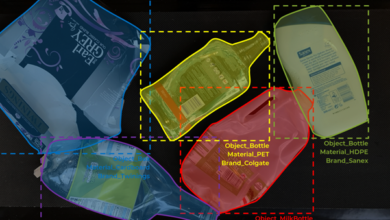
Often considered as beings of the future, it may come as a surprise that 2021 is the 100th anniversary of the invention of the word ‘robot’. The term was originally coined by Karel Čapek in his play RUR: Rossum’s Universal Robots, which had its premiere in Prague 100 years ago. If you are not familiar with it, the play suggests that robots can “relieve humanity of demeaning drudgery”, but inevitably, the robots eventually revolt and kill their creators.
Despite a century passing, and along with it, huge technological advances, the narrative has barely changed. But with the benefits of bots, AI and automation undeniable, how can businesses accelerate the eradication of ‘drudge’ work without the drawbacks? All the while, empowering employees to be more creative, productive and innovative.
Robots have come a long way
Let us first consider how far we have come with bots since the play’s creation. Most of us would have seen the amazing videos of the “Big Dog” bot, developed by Boston Dynamics. The company that makes them was recently acquired by Hyundai from Google. This dog has rapidly evolved exponentially in just a few years into something quite mind-blowing – one could argue it is now more human than a dog. It even takes on an impressive dance routine that would look right at home on ‘Dancing with the Stars’!
Of course, many people still associate robots with having a physical presence, such as the Big Dog bot, and as something that can automate what a human might do. Arguably, 100 years ago, before computers, that was likely what Čapek meant. Since the advent of the computer, the software has been used to automate more and more human activities – from data entry, to payroll, to banking, right through to tap-and-pay. This software, developed in trillions of lines of code (manually written), has allowed the automation of an infinite number of drudgery transactions that normally a human would have done. However, the very fact we called this type of automation “computerization”, confirms the fact that we have never considered software programs, “robots”. 100 years on, it raises the question – should we?
Automation or computerization?
So, what is software automation then, if not now computerization? In the same way, Big Dog has rapidly evolved, and self-driving robots in the form of autonomous vehicles are becoming more advanced and mainstream, so has the way we are computerizing our future in the here and now.
Robotic Process Automation (RPA) came along over a decade ago to start automating work that was previously computerized i.e., robots using robots, and we have all seen how that movie ends! RPA certainly has its place and continues to assist businesses optimizing processes that are often a significant drain on their human workforce. And the next generation of automation must do more than just sit on top of already automated antiquated legacy programs that are often past their prime. So, how can businesses today, accelerate their transition to an automation nirvana future, whilst ensuring a happy ending?
A human-centric approach to automation
The era of ‘drudgery jobs’ is disappearing, and, with automation, there is the possibility of shifting more workers to tasks that rely on skills humans possess but robots do not, such as empathy, creativity, motivation, and the ability to understand multiple contexts. But to drive up our next generation of software development, we need an approach to automation that is both human-centric and based on no-code. After all, with stories such as Čapek’s at the back of their mind, the enterprise must find a way to shake their workers’ inherent fear of automation.
To succeed, businesses must take a human approach to technology and address these concerns by explaining how today’s automation technologies can actually benefit employees and help foster innovation and creativity. Once workers see that they can eliminate the mundane tasks altogether through automation with low-code, the migration to the next phase of automation without code will begin – because as the other well-known science fiction story (Back to the Future) meant to say was, “Marty, code? Where we are going, we don’t need code.”




